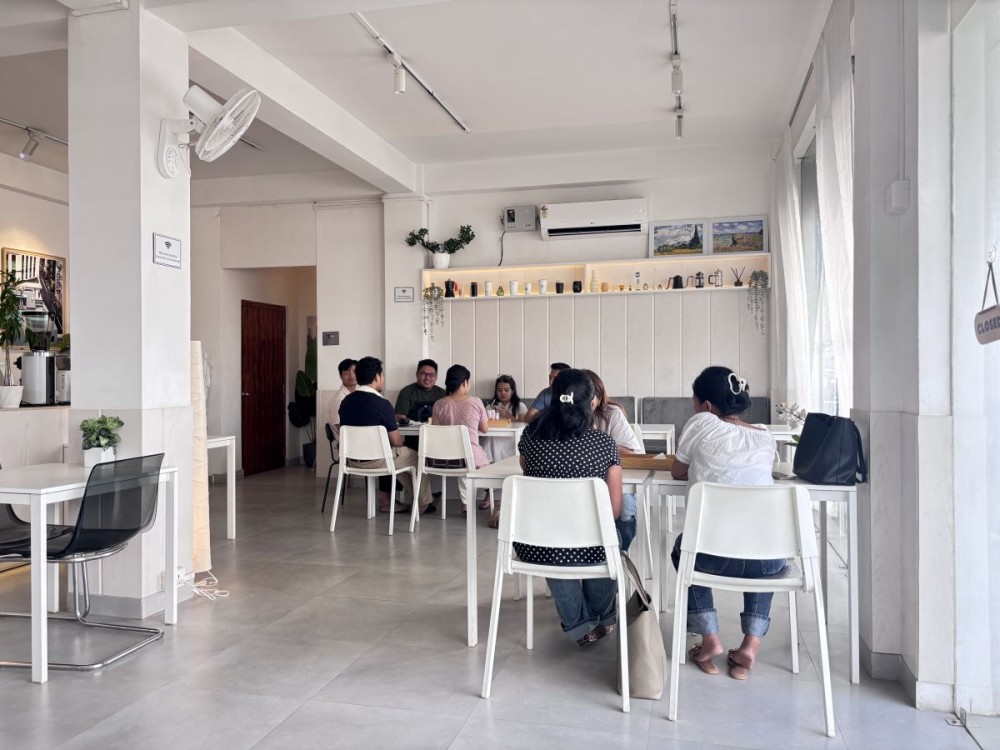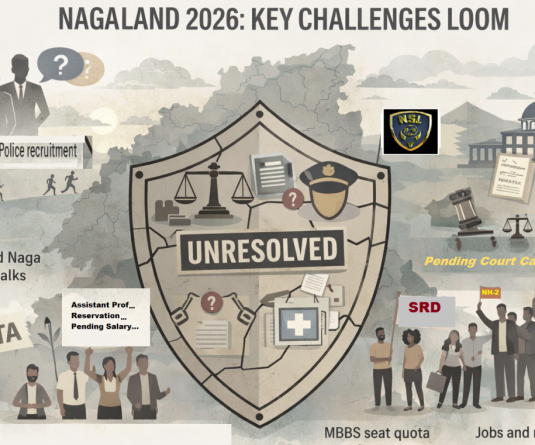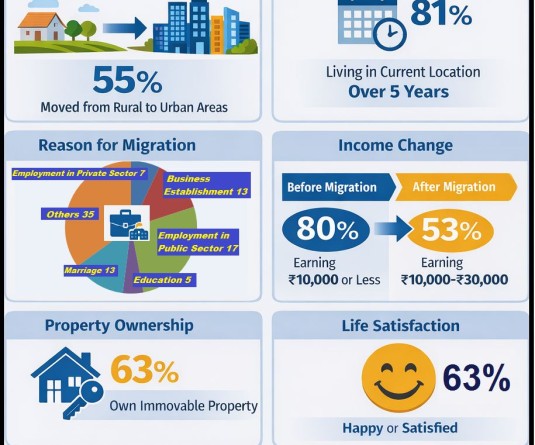A group of customers enjoys a quiet afternoon at a minimalist-themed café in Dimapur — part of the town’s rapidly growing café culture that blends aesthetics, youth enterprise, and a changing urban lifestyle.

From unemployment to aesthetics, cafés are reshaping Nagaland’s commercial hub
N Katemongla
Dimapur | August 1
Dimapur’s café culture has expanded significantly in recent years. With cafes emerging on nearly every corner of the town, one cannot help but wonder: what makes coffee so special to the Nagas? What is driving this growing movement? Is it the changing work culture, rising unemployment, or perhaps the influence of aesthetic trends on social media unfolding a café evolution?
The reason is not solely to tackle unemployment but to serve a broader purpose. Over the years, Nagaland has witnessed the growth of coffee farms and visionary founders such as Ete Coffee, Nagaland Coffee, and Lithanro Private Limited.
According to a report by Al Jazeera in May 2025, driven by policy reforms and a wave of young entrepreneurs, Nagaland has nearly 250 coffee farms, covering 10,700 hectares (26,400 acres) across 11 districts.
Searon Yanthan, founder of Juro Coffee House, shared that the main objective behind his coffee shop was to encourage people towards self-sustainability through coffee. Moreover, he asserted that since coffee sits at the top of the market chain, farming it the right way could be extremely lucrative for Nagaland-grown coffee.
The increase in the number of cafes across Dimapur is not seen as a competition. “It should keep growing,” Yanthan said. In fact, it is perceived as a positive development for eradicating unemployment in society. “Even a small cafe requires at least five to six people to employ. Two waitresses, one to two baristas, kitchen team, and managers. I think it is going to help our economy as well,” he said.
According to a recent qualitative survey, many described the current café scenario in the region as “rapidly improving,” “competitive,” and “a sign of social transformation in Nagaland’s commercial hub.”
For a developing society, the acceptance of café culture almost feels like an economic and cultural turning point. As one respondent put it, “It is good to see various kinds of cafes with different styles of interior designs bringing different vibes.” Another shared, “Change is weird for Nagas; they don’t cope well.”
Today, Dimapur’s café culture is as much about appearance as it is about brews. Social media has contributed significantly to the popularity of cafes in the town. While traditionally, cafes are valued for their coffee, today they have transformed into “aesthetic” sanctuaries and spaces that cater more to the camera than the cup.
In the survey, a few respondents stated that cafes in Dimapur have become increasingly about ambience and aesthetics. One said, “Eighty percent of the people don’t even care about what they’re having.” Another described, “Coffees are the soul of a cafe and most cafes are just sofas and lights without a soul.”
The rise in entrepreneurship through café culture has partially contributed to tackling unemployment. “Many youths in Nagaland where traditional job markets are limited, are turning to cafes as creative micro-enterprises,” shared a respondent. However, this view is not universal. A newly employed barista expressed that it does not fundamentally address the larger issue. “Not all unemployed youth have the zeal or interest to work in a cafe, and even if some do, it does not apply to the unemployed population as a whole,” he stated.
In an interview, Marlyn Hangsing, founder of Swish Cafe in Shillong (2003) and Cafe 77 in Dimapur (2007), reflected on the roots of cafe culture in the region. A pioneer in starting cafes in Nagaland and Shillong, she said she had a clear motivation to allow people, even those with limited means, to experience a proper cup of cappuccino at that point of time. “A cappuccino at my cafe cost just Rs 20. People would ask why it was so expensive when Nescafé cost Rs 2, while tourists asked how it was so affordable for the quality. I was not trying to make a profit, I just wanted to introduce real coffee to the region,” she recalled.
For Marlyn, cafes were never a transactional place but rather a relational one where people could connect, feel a sense of comfort and develop friendships. “Single diners did not hesitate to come because it was open, warm, and familiar,” she shared.
Today, the growth of cafes in Dimapur reflects a cultural transformation that signifies modernity in lifestyles. While the trend of opening cafes plays a significant role in this growth, it is important to reflect on broader implications beyond just trends and aesthetics. Although the café boom cannot singlehandedly resolve unemployment, it has opened new avenues for youth, fostered self-sustainability, and shaped Dimapur into a hub of modern social interaction.
The writer, N Katemongla is a student of Mass Media and Communication in Nitte Institute of Communication, Mangalore, Karnataka. This report was written as part of her internship in The Morung Express.






